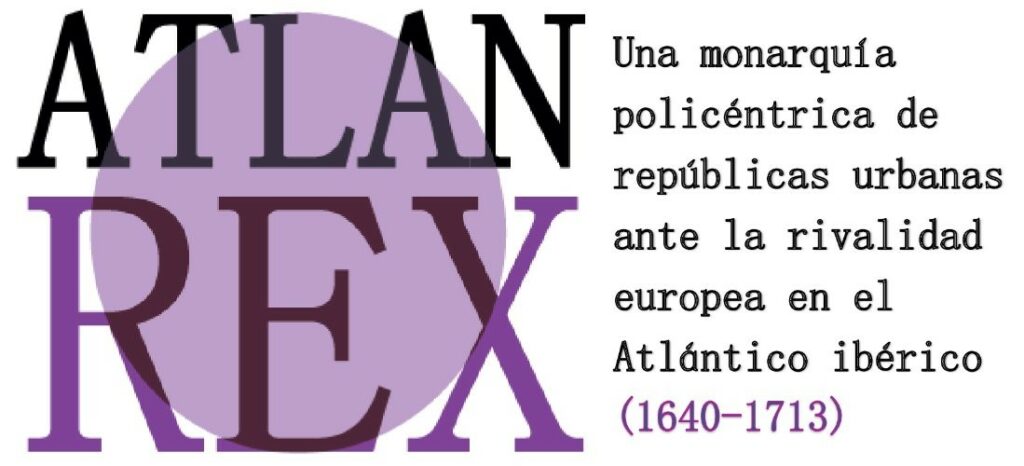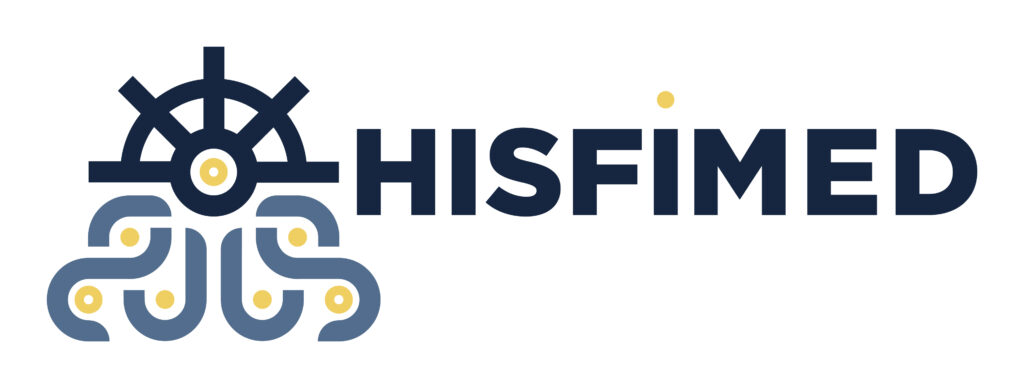Geometry, Frans Floris (1557)
Estudios sobre Europa,
el mundo mediterráneo
y su difusión atlántica
(HUM 680)
Active projects

Research Team:
Cristina Bravo Lozano (UAM) IP1
Manuel Herrero Sánchez (UPO) IP2
Esperanza Mo Romero (UAM)
Margarita Eva Rodríguez (UAM)
Project Team:
Gibrán Bautista y Lugo (Universidad Nacional Autónoma de México)
Maria Fernanda Baptista Bicalho (Universidad Federal Fiuminense)
Carlos Ciriza Mendivil (Universidad Pública de Navarra)
Juan Sebastián Gómez González (Universidad de Antioquía)
María Luz González Mezquita (Universidad Mar del Plata)
Guillaume Hanotin (Université Bordeaux-Montaigne)
Klemens Kaps (Johannes Klepler University Linz)
Charles Édouard Levillain (Université Paris-Cité)
Jonatán Orozco Cruz (UPO)
Christopher Storrs (University of Saint Andrews)
Margarita Suárez Espinosa (Pontificia Universidad Católica de Perú)
Joao Manuel Vaz Monteiro Figueiroa Rego (Universidade Nova de Lisboa)
Mariana Ladrón de Guevara Zuzunaga (UPO)
Alberto Hernández Pérez (UAM)
Throughout the second half of the 17th century, the Atlantic dimension was determined by the rivalry between European powers to establish prominent positions in the Americas. After the end of the hegemonic Iberian Atlantic, the economic rise of monarchies, principalities, and republics of the Old World and the business opportunities provided by the Indies determined the proliferation, emulation, and materialization of territorial aspirations. Through privileged trading companies, attempts to establish permanent mercantile and population enclaves multiplied. In a period of conflicting models of sovereignty, the Spanish monarchy required a different way of organising the extra-European space. The revaluation of overseas territories, as the arbitrists of the time pointed out, was a means of regeneration and a mechanism for effectively facing the challenge of expansion in the Iberian Atlantic. Dense networks of individuals, collectives, capital, and resources were deployed in such enterprises, which have so far been studied individually, but ―in most cases― not synoptically. Less well known, however, is the contribution of diplomacy and the handling of news in these colonizing dynamics, the management of negotiations for the resolution of territorial or economic disputes and conflicts arising in the Indian sphere or from the projection of armed confrontations which, initiated in Europe, had their correlation in those kingdoms, and the insertion of advantageous clauses in the treaties of trade, alliance, and peace that were signed between 1640 and 1713. The growing threat to the Monarchy posed by a greater foreign presence within its jurisdictional boundaries or by the participation of new agents whose activities contributed to destabilizing the fragile balance of power generated immediate reactions. From the Spanish perspective, their supposed decline in Europe contrasted with the consolidation of strategic poles on the Atlantic coasts, the deployment of defensive means to halt the European advance and preserve key areas for their interests, the extension of their dominions, and the strengthening of the loyalty of local communities in the times of the second globalization.
The aim of this project is, therefore, to examine in depth how the Spanish monarchy, interpreted as a polycentric model of urban republics, responded to colonial expansion projects during the second half of the 17th century and the War of the Spanish Succession. To this end, we will examine in depth the political and theoretical patterns sponsored by the legitimization of the occupation of lands in the Indies; the practices of power and formulas of political mediation, or the mechanisms of collaboration and economic participation between agents and subjects, foreign corporations and emporiums or Indian urban republics; the respect for local autonomy, the attraction of cosmopolitan models and networks, the active participation of the local sphere in the management of a political structure of global implantation; the dynamics of hybridisation and cultural exchange; the systems of communication and circulation of information; migratory flows for the establishment of permanent population settlements; and, finally, the slave trade, managed through the Asiento, as a phenomenon of political attraction of third powers towards the New World.
RedLibros, Las redes del comercio de libros en la Monarquía Hispánica: mercados, agentes y arquitectura financiera. 1501-1648 (PID2022-137793NB-I00), is a knowledge generation project funded by Spain’s Ministry of Science and Innovation (Ministerio de Ciencia e Innovación) and co-funded by the European Union. The main motivation of this project is to find out how the book trade operated in the Hispanic Monarchy during the Early Modern Age period through its agents, the networks they created and how they financed them. To this end, we start from the hypothesis that from the XVIth century onwards we find ourselves within a truly global book market, in which the centres of production and the final consumers, both in Europe and America, were interconnected.
In this environment, the Iberian Peninsula played a fundamental role as a consumer of books produced by European presses, as a producer for the local and American markets and, especially, as a redistributor to America of the flows arriving from other parts of Europe. In this last process, the Monarchy will play a crucial role as the driving force and, at the same time, as the regulator of the traffic of books across the Atlantic.
The project is structured around three general objectives:
- To reconstruct and study the network of agents that allowed the commercial circulation of books in the Hispanic Monarchy, identifying protagonists, strategies, alliances and relative importance within each market.
- To explain how the book trade network was sustained from a financial point of view.
- To analyse the process of globalisation of the book market, comparing the different markets and studying their interconnections, hierarchy and level of specialisation.
Research Team:
José María García Redondo, EEHA/IH, CSIC
Salvador Bernabéu Albert, EEHA/IH, CSIC
Technical Secretariat:
Antonio José Jiménez García-Baquero, EEHA/IH, CSIC
Project Team:
María Castañeda de la Paz, Universidad Nacional Autónoma de México
Andréa Doré, Universidade Federal do Paraná, Brasil
Junia Ferreira Furtado, Universidade Federal de Minas Gerais, Brasil
Loles González-Ripoll Navarro, Instituto de Historia, CSIC
Carolina Martínez, CONICET-Argentina
Rodrigo Moreno Jeria, Universidad Adolfo Ibáñez, Chile
Mauricio Onetto Pavez, Universidad de Magallanes, Chile
Michel R. Oudijk, Universidad Nacional Autónoma de México
Vicente Pajuelo Moreno, Universidad de Cádiz
María Ruiz del Árbol Moro, Instituto de Historia, CSIC
Verónica Salazar Baena, Universidad Nacional de Colombia
R+D+i project ‘Marcos de mapeo y prácticas de territorialización en América (siglos XVI-XVIII): espacios, categorías y representaciones’ (MAPWORKS)
PID2022-141020NA-I00, funded by MICIU/AEI /10.13039/501100011033 and by FEDER, EU.
The MAPWORKS project analyses the processes and practices of territorial apprehension through cultural artefacts and representations of a visual, textual, conceptual and topological nature in the Americas between the XVIth and XVIIIth centuries. It proposes a complex approach to the mechanisms of shaping geographical notions and ideas, in direct connection with the space of reference and its empirical experience.
This set of territorial representations is included in a new category of analysis that we call ‘mapping frameworks’; a broad spectrum of artefactual, cultural and symbolic products aimed at structuring and explaining the natural and human environment: maps, geographical descriptions, landscapes, interventions on the environment, spatial concepts and socio-territorial conceptualisations, the latter understood as constructions by human beings in relation to or as a consequence of the belonging of a group to a specific place.
From our field of knowledge, in the history of America and the history of cartography, American societies during the colonial period present themselves as a prone field for the development of this research, given the complex territorial and human processes of conquest, confrontation, hybridisation, aggregation or negotiation developed, during that period, in very dissimilar spaces and contexts.
In the shaping of the American territories and their immediate oceans and in the inherent processes of construction of geographical knowledge, representations were produced that operated as cultural systems that explained and structured the world (mapping frameworks), linking places and endowing them with meaning, but also interacting with other pre-existing knowledge, representations and territorialities or resulting from Iberian action in the American environment, whether from indigenous cultures or from other foreign nations. These mapping frameworks therefore played a mediating role between geography and human actions on lands and seas, as a result of some practices and as an agent or conditioner of others. In this way, maps, whether drawn or in prose, but also texts with geographical content, landscapes or socio-territorial categories, reveal a structured version of the geographical factors involved in human actions and decisions on the environment.
It is therefore necessary to adopt an inter/multidisciplinary perspective, with specialists in history, archaeology and anthropology in order to: 1) deepen the knowledge of the representations of the territories and oceans of the New World, beyond the cartography produced by Western science; 2) understand the uses and interrelationships of cultural elaborations of spatiality with processes of territorialisation; and 3) explain socio-environmental links, territorialities and representations of subaltern groups, indigenous, mestizo, European, Asian and African populations in colonial America.
In collaboration with:
- Red Geopam. «Geopolítica americana siglos XVI-XIX». The activity is carried out in collaboration with the Geopam Network, which holds its meetings within the framework of the congress.
- Grupo PAIDI HUM-680 «Estudios sobre Europa, el mundo mediterráneo y su difusión atlántica», Universidad Pablo de Olavide.

Research Team:
Benoît Maréchaux (Complutense University of Madrid) IP1
Francisco Cebreiro Ares (Complutense University of Madrid) IP2
Carlos Álvarez Nogal (University Carlos III of Madrid)
Project Team:
Alejandro García Montón (Granada University)
Ana Sofia Ribeiro (Universidade de Évora)
Andrea Caracausi (Università degli Studi di Padova)
Arnaud Bartolomei (Université Côte d’Azur)
Catia Brilli (Università degli Studi dell’Insubria)
Cecilia Tarruell (University of Oxford)
Claudio Marsilio (Università degli Studi di Verona)
Fausto Fioriti (Università degli Studi di Genova)
Isabella Cecchini (Consiglio Nazionale delle Ricerche – Istituto di Storia dell’Europa Mediterranea di Roma)
Klemens Kaps (Johannes Kepler University Linz)
Luca Lo Basso (Università degli Studi di Genova)
Mathieu Grenet (Université d’Albi)
Rocío Calvo Domínguez (Université Côte d’Azur)
Yasmina Rocío Ben Yessef Garfia (Università degli Studi di Napoli Federico II)
In a recent context characterised by the reconfiguration of global supply chains, the HISFIMED project proposes a collective research programme on the history of the Spanish-American silver chain. Its aim is to analyse the globalisation of precious metals – and its link with capital flows – from the perspective of the Mediterranean world. In particular, it analyses how and for what purposes the Spanish crown and its bankers, along with a range of individuals and organisations, moved silver and gold between different places in a maritime space that has generally been left out of the grand narratives of early globalisation, both in its Spanish and monetary aspects. In addition to discussing the changing role that the Spanish monarchy and many of its collaborators played in this historical process over more than two centuries, the investigation of this twofold question will raise the problem of the dialectical relationship between the control and circulation of a strategic asset in a period marked by both the mercantilist ambitions of the Spanish rulers and the emergence of an early globalisation. To this end, it will also be essential to analyse the ways in which Mediterranean cities and companies, especially Italian ones, intervened to attract or regulate the metal and to profit from its supply.
The study of these issues from the perspective of the actors will lead to the prioritisation of the examination of sources that allow the analysis of the decisions and actions of those who shaped the supply chain. Thus, the 17 members of the project will mainly – but not exclusively – analyse private and notarial archives, as well as the collections of key institutions and actors in the mobilisation of money (public banks, consuls, mints, central governments, etc.).
Based on the analysis of this type of source, the research will focus on four cross-cutting questions. Firstly, it examines which actors were most important in Mediterranean precious metal trade, and how regulation and trade, as well as cooperation and emulation, interacted. The second objective is to examine the continuity – and the reasons for it – of the Mediterranean as an important centre in the process of financial and monetary globalisation throughout the early modern period. A third line of research – focusing on logistical and seaport aspects – raises the strategies and organisational solutions that both trading companies and institutions put in place to control, exchange and transfer money – making the most of it – and to mitigate the adverse effects that might arise. The final objective is to identify the implications of the reversibility of money and the link between the financial circuits of the bill of exchange, the mobility of precious metals and the international trade in goods.
Recent events:
- Seminary: La Odisea mediterránea de los metales preciosos hispánicos en la Época Moderna: un proyecto colectivo. 22 – 23 june 2023. UCM – Casa de Velázquez. More information here. Full programme here.
- Seminary: COOPERACIÓN COMPETITIVA EN EL SIGLO XVII: Logros y fracasos en las relaciones entre hombres de negocios genoveses y portugueses al servicio de la Monarquía Hispánica. Full programme here.


